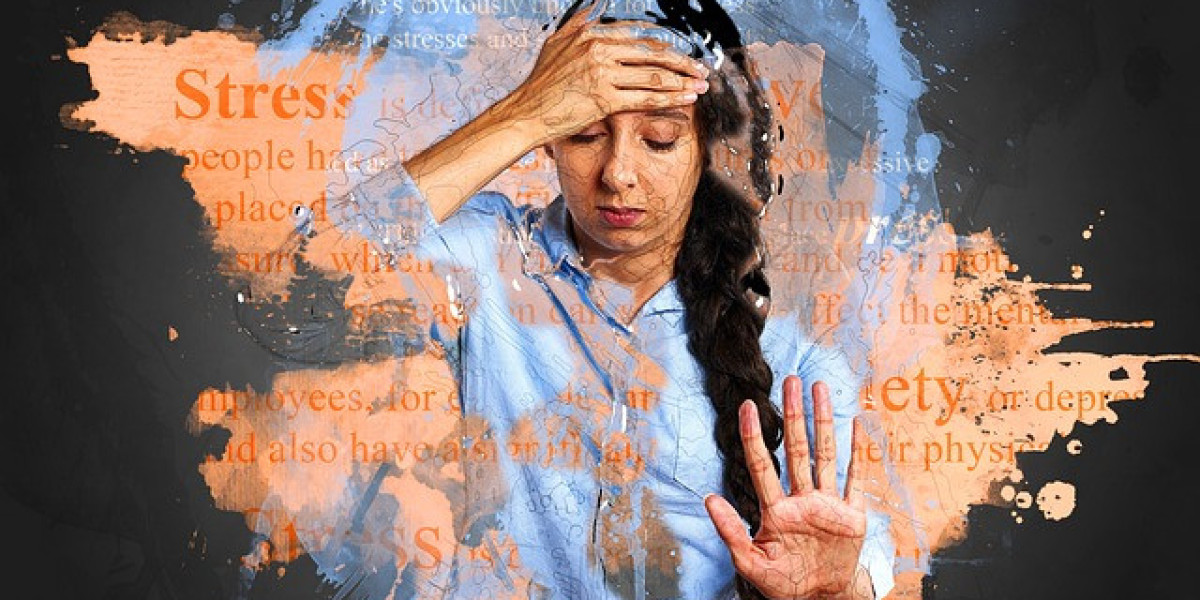Substance abuse and anxiety disorders are two intricate phenomena that frequently overlap and have an impact on people's mental health and general wellbeing. It is essential to comprehend the complex interaction between these two illnesses in order to develop treatment and support plans that work. The relationship between anxiety and substance withdrawal is examined in this article, along with its common expressions, underlying causes, and the significance of receiving complete care.
Knowing About Anxiety and Withdrawal from Substances
Anxiety Disorders:
Characterized by excessive worry, fear, and apprehension, anxiety disorders are among the most common mental health diseases worldwide. These conditions can take many different forms, such as panic disorder, social anxiety disorder, generalized anxiety disorder (GAD), and particular phobias. Symptoms frequently make life difficult, impacting relationships, employment, and general quality of life.
Substance Withdrawal:
When someone quickly cuts back on or stops using a substance on which they have become dependent, they may experience physiological and psychological symptoms. This is known as withdrawal. Stimulants, alcohol, benzodiazepines, and opioids are frequently linked to withdrawal. Depending on the drug and the person's level of dependency, withdrawal symptoms can range from little discomfort to serious consequences.
The Crossroads: Fear During Withdrawal
Prevalence and Co-occurrence:
Substance use disorders (SUDs) and anxiety are frequently co-occurring conditions. Substance abuse is a common response among many people to anxiety symptoms that have been present for some time and may become worse. On the other hand, because stopping a substance usage leads to neurobiological changes and psychological stress, withdrawal symptoms of anxiety often worsen during this time.
Types of anxiety during withdrawal:
Generalized anxiety, panic attacks, social anxiety, and specific phobias are just a few of the ways anxiety symptoms can manifest during withdrawal. A person's underlying psychological vulnerabilities, length and intensity of substance use, and genetic predisposition may all exacerbate these symptoms.
Neurobiological Mechanisms:
Complicated connections between the brain's reward and stress pathways underlie the neurobiological foundation of anxiety and substance withdrawal. Neurotransmitter systems, such as dopamine, serotonin, and gamma-aminobutyric acid [GABA], are altered by long-term substance use and are linked to anxiety disorders. Substance abuse alters these processes, which can lead to the start of anxiety symptoms or make them worse.
Typical Signs of Nervousness When Withdrawing
Physical Symptoms:
During withdrawal, anxiety can present physically as headaches, tremors, sweating, elevated heart rate, and gastrointestinal problems. These symptoms may resemble those of a panic attack, which would make the person feel even more uncomfortable and distressed.
Psychological Symptoms:
Feelings of restlessness, impatience, hypervigilance, and a sense of impending doom are common psychological symptoms. During this time, people may have trouble focusing, sleeplessness, intrusive thoughts, and increased susceptibility to stresses.
Behavioral Reactions:
There is a broad range of behavioral reactions to anxiety during withdrawal. Some people may retreat socially and steer clear of situations that make them anxious. Others may use dangerous activities, impulsivity, or agitation as a maladaptive coping mechanism for their sadness.
Difficulties in Diagnosis and Therapy
Diagnostic Complexity:
Because symptoms of anxiety during substance withdrawal sometimes overlap and because withdrawal-related suffering might conceal underlying anxiety disorders, diagnosing anxiety during substance withdrawal can be difficult. To distinguish withdrawal-induced anxiety from pre-existing problems, clinicians must carefully evaluate the onset, course, and setting of symptoms.
Treatment Considerations:
A comprehensive approach is necessary for the effective management of anxiety during substance withdrawal. To treat acute symptoms, pharmacotherapy may be recommended, such as the short-term use of benzodiazepines or selective serotonin reuptake inhibitors (SSRIs). To reduce the chance of substance abuse or drug dependence, however, close observation is necessary.
Psychosocial Interventions:
In order to treat underlying anxiety and encourage long-term recovery, psychosocial interventions such as support groups, mindfulness-based techniques, and cognitive-behavioral therapy (CBT) are essential. These therapies support people in strengthening their resilience, creating coping mechanisms, and controlling the triggers that lead to substance abuse and anxiety.
Dual Diagnosis Treatment's Function
Integrated Care:
Dual diagnosis treatment programs are made to meet the unique requirements of people who have drug use disorders and anxiety disorders that co-occur. These programs offer individualized care plans based on each patient's specific needs and recovery objectives. They integrate psychiatric and addiction therapy approaches.
Holistic Approach:
When treating dual diagnoses, holistic methods place a strong emphasis on addressing the social, psychological, and physical aspects that contribute to anxiety and substance abuse. Social workers, psychologists, addiction counselors, psychiatrists, and other medical specialists may collaborate in treatment teams to offer all-encompassing therapy.
Long-Term Management:
Relapse prevention techniques, continuous psychoeducation, and routine mental health status monitoring are the main components of long-term management of anxiety and drug use disorders. Community resources and peer support networks are also essential for maintaining recovery and advancing general wellbeing.
In summary
The relationship between anxiety and drug withdrawal emphasizes how difficult it is to treat mental health and substance use disorders that co-occur. A thorough understanding of symptomatology, personalized care plans, and neurobiological pathways are necessary for effective treatment. Healthcare professionals can help patients navigate the difficulties of withdrawal while treating underlying anxiety problems by combining medication, behavioral therapies, and holistic treatment techniques. In the end, encouraging recovery and enhancing quality of life for people with dual diagnoses necessitates a multimodal strategy that places an emphasis on all-encompassing care and ongoing support.
To summarise, raising awareness of the relationship between anxiety and drug withdrawal is critical to developing empathy, decreasing stigma, and advocating for efficacious treatment approaches in global healthcare systems and communities. Through the application of evidence-based approaches and compassion in treating these interwoven difficulties, we can enable individuals to attain long-term recovery and mental health.



